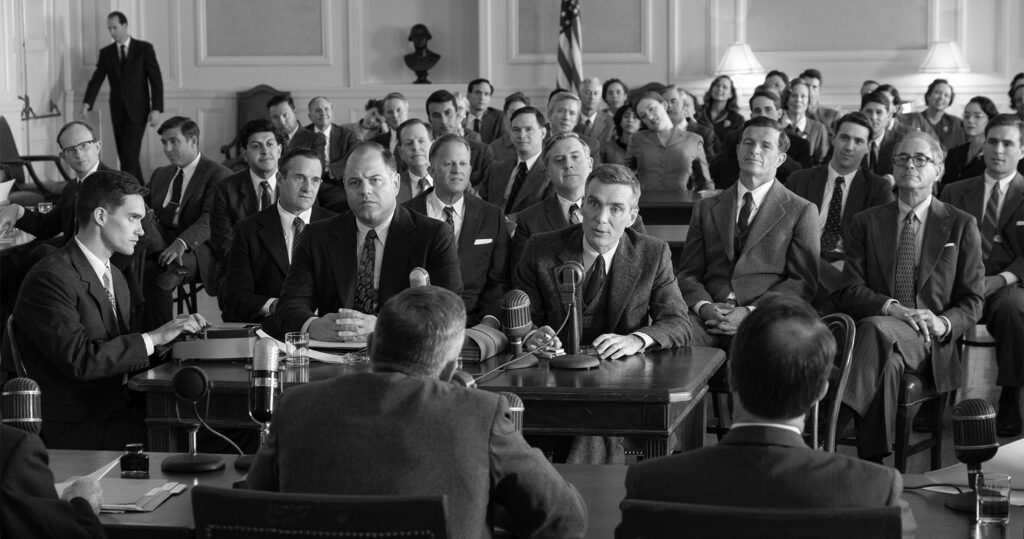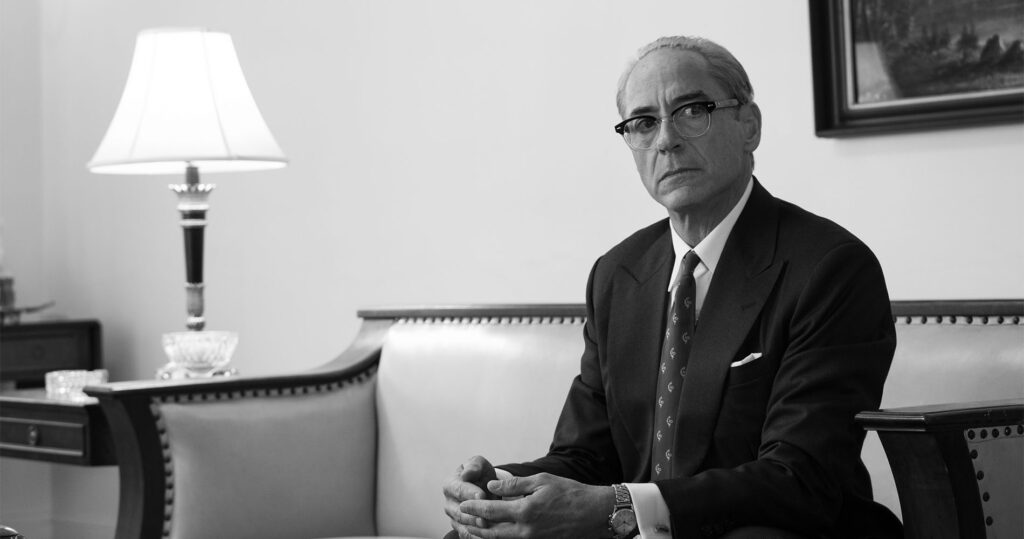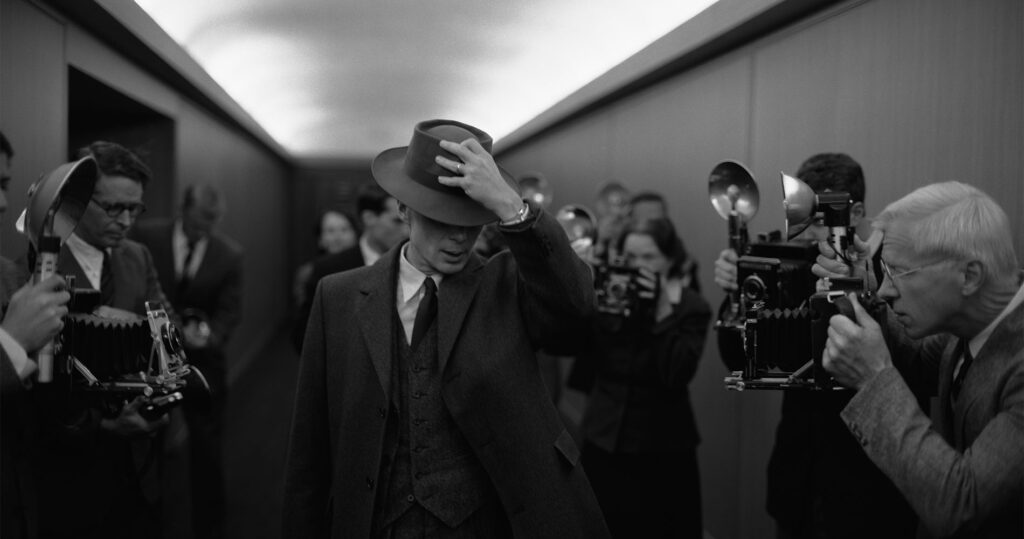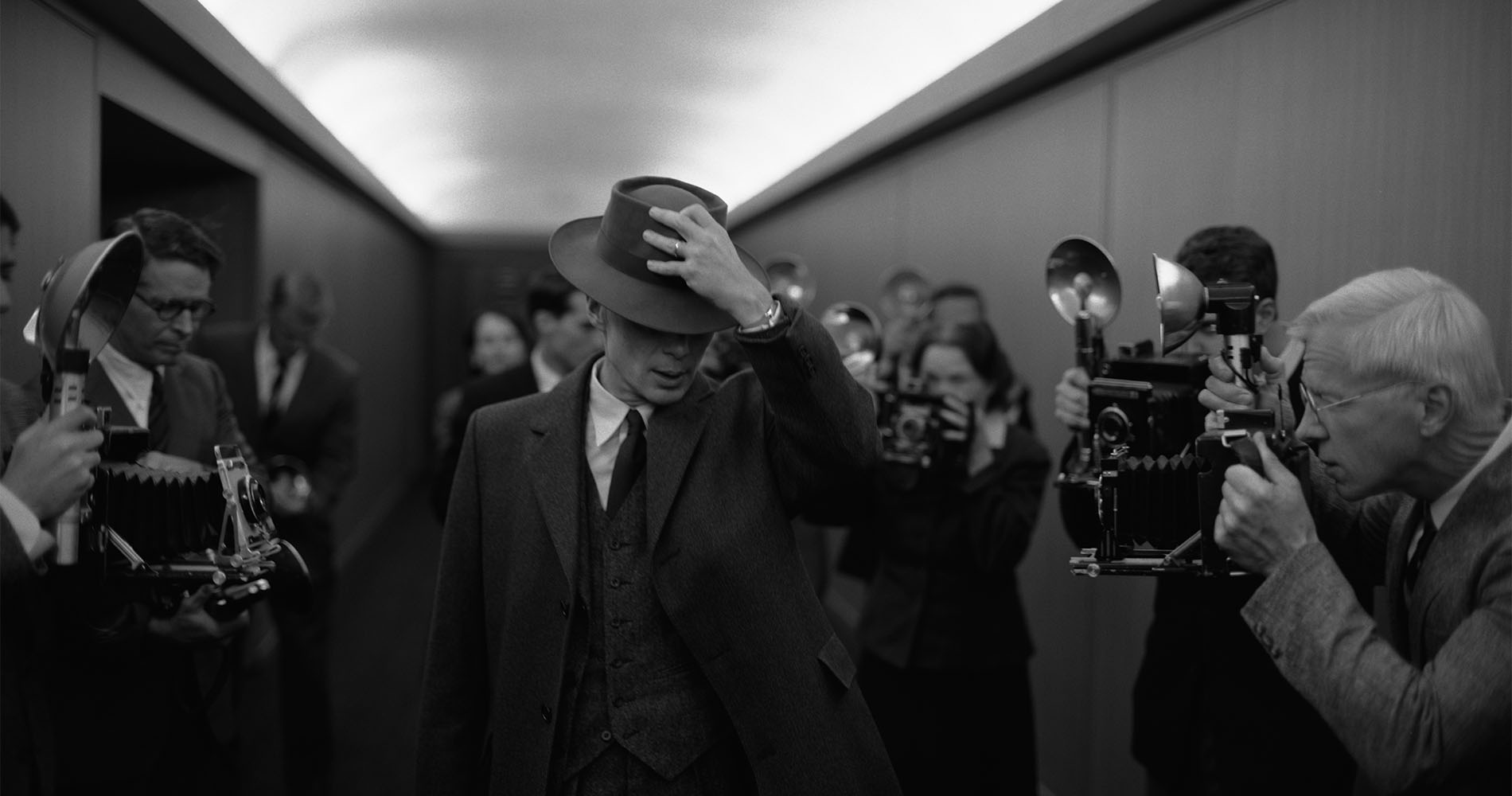“Oppenheimer” and “Barbie” constitute one of the greatest opening weekends since 2007’s “The Dark Knight” and “Mamma Mia!”. The unlikely pairing is arguably the first time the United States has experienced true peace in its history, despite “Oppenheimer” focusing entirely on backroom political maneuvering and the military industrial complex.
“Oppenheimer” is a dense biographical thriller detailing the life and career of J. Robert Oppenheimer, an American theoretical physicist who spearheaded the Manhattan Project at Los Alamos National Laboratory. Oppenheimer’s life is framed through a retelling of the Oppenheimer security hearing.
The movie takes a unique, nonlinear approach to storytelling. The movie doesn’t just start at the beginning of Oppenheimer’s career, but rather follows a sequence of key events as detailed through the security hearing. The choice is entirely purposeful — it mimics the way information is released by the media in real time. By not revealing key plot points in chronological order, the film constantly supplies the audience with new details about Oppenheimer’s dealings. The audience — much like the audience of the security hearing — is kept engaged throughout the three-hour runtime.

Cillian Murphy as J. Robert Oppenheimer in one of the film’s many hearings.
A decent portion of people who left the theaters felt a little confused. At the cinema, some people said it was hard to keep up with the plot at times. The movie consistently drops bombshell revelations that make people re-evaluate their prior understanding of the plot. It’s the sort of movie that people must rewatch to comprehend the entire picture, but it’s a little hard to entice viewers to spend another three hours watching the same film — even if it is a summer masterpiece.
Aside from the unique plot structure, audiences also find the performances captivating. The cast is stacked with talented actors. Cilian Murphy’s performance as Oppenheimer did not fall short. Murphy carries a certain mystique that allows the film’s plot to fulfill its goal — to unravel the mystery behind the Manhattan Project. It was also pleasant to see Robert Downey Jr. perform a more serious role. He spent nearly 13 years almost exclusively known as Iron Man, but his role as Lewis Strauss reminded the audience of his full capabilities.

Robert Downey Jr. as Lewis Strauss in “Oppenheimer”.
The audio editing is remarkable. It’s often difficult for general audiences to notice the nuances of audio mixing. Most people only care when the editing is egregious or fantastic. “Oppenheimer” doesn’t take the easiest approach of building tension by increasing the amazing soundtrack’s volume. Instead, sound designers Richard King and Randy Torres choose to highlight critical portions of the film through silence. For instance, the nuclear test is entirely silent until the very last moment and is punctuated with a resounding explosion.
Aside from the sound editing, all of the visual elements were also noteworthy. “Oppenheimer” opted to use practical effects instead of computer-generated imagery. CGI animation has come a long way, but the practical effects’ authenticity adds grit to the movie’s aesthetic. The macro-shots of sparks and flames captured what Oppenheimer found so entrancing about theoretical physics. Audiences cannot begin to grasp the complexities of the science, but the movie successfully recreates a sense of wonder and awe for exploration. The choice to make the security briefing scenes’ color palette monotone creates a stark contrast to the slightly muted, earthy palette in flashback scenes. Besides serving as a clear visual indicator for the timeline, audiences can also have fun picking the literary implications behind editing decisions.
The only downside to the film regards discussing the film with others. People unanimously agree that Christopher Nolan’s craftsmanship is impressive, but it seems like there can be disagreements about the film’s messaging – to no fault of Nolan. It is impossible to avoid politics and partisanship in a film about technological advancements during World War II.

J. Robert Oppenheimer’s relationship with the press plays a key role in the film.
After a conversation with my mother about the film, I came to realize political leaning affects what an individual takes away from the film. My mother had a positive view of Oppenheimer and a negative view of Strauss. On the other hand, I came to the conclusion that “Oppenheimer” is a hero-less film. Both Oppenheimer and Strauss engaged in less-than-tasteful political dealings. It’s mainly up to the audience to decide which is the lesser of two evils.
A final, yet potentially divisive, take: the proper order of a Barbenheimer double-feature is “Oppenheimer,” then “Barbie”. It’s the same philosophy behind the decision to watch “The Dark Knight” before “Mamma Mia!” — watch a darker film and cleanse your palate with a fun, summer flick. Only masochists would attempt otherwise.
Jess Cabrera is a journalism student at the University of Nevada, Reno. They can be reached via email at jessicacabrera@sagebrush.unr.edu or via Twitter @jessicabreras.








